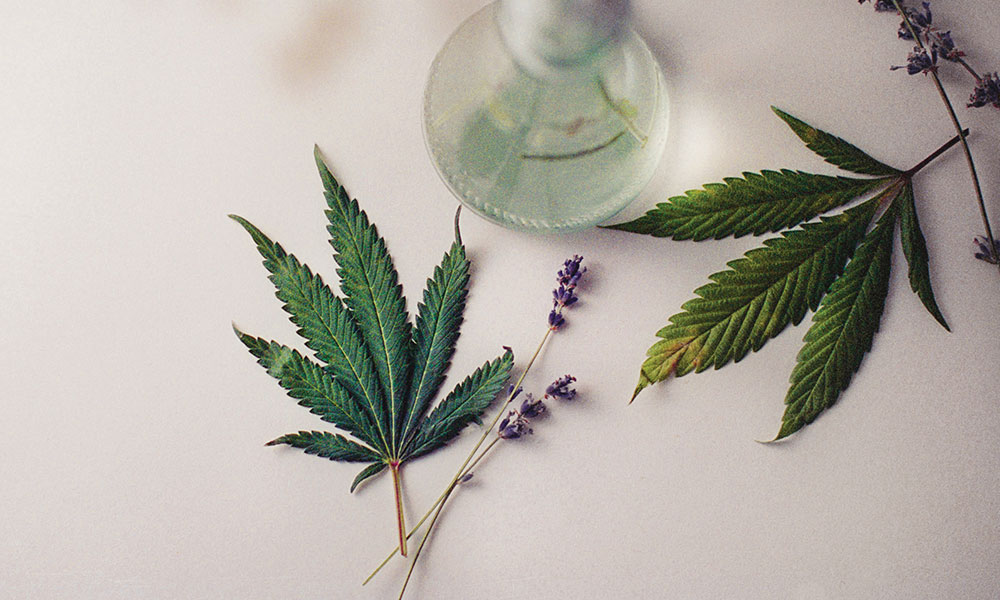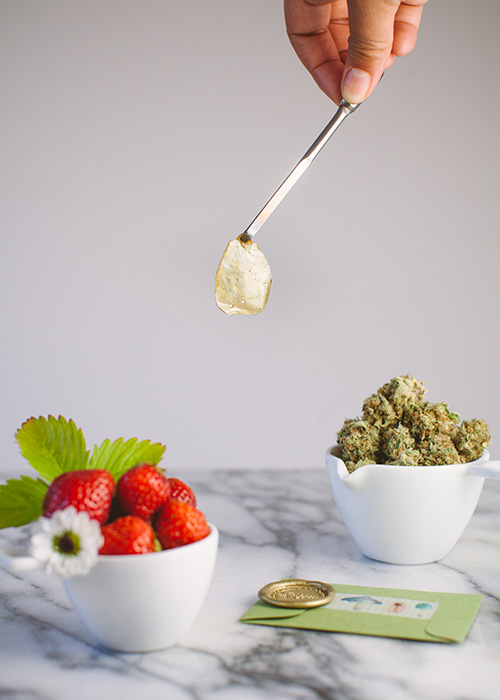Stop for a second and think about your last smoke session. Imagine the smell after grinding up the bud, the flavor after that first full exhale and the pleasant effects that follow: a boost of energy, a wave of relaxation or a sense of peace. The unsung hero of your perfect post-high moment? Terpenes. These aromatic compounds, also found in other plants, herbs, flowers and even fruits, are key players in the taste and scent of your cannabis and the distinct buzz that follows.
Because terpenes also interact with cannabinoids to create all of the components that make up your favorite strain, adding herbs to your cannabis can enhance the consumption experience.
Depending on which herbs you use, you can boost flavor profiles, increase energy and focus, ease pain or reduce stress. There are lots of different ways to pair herbal blends with cannabis and knowing what to consider before making your own combination is crucial for coming up with the perfect mix.
Monica Fine, a California-based master herbalist, has some simple tips when it comes to matching herbs with cannabis strains. She says it’s best to use what you like in small amounts, change herbs regularly and try to use what is actually in season around you. Fine explains that any herb used in excess can be dangerous — even ones you think are the safest.
She also suggests staying away from herbs like datura, morning glory and nightshades, which are poisonous.

Unfortunately, she cautions that both burning and vaping dried herbs don’t allow you to enjoy the highest terpene content possible, because of the process of combustion and oxidation burns off terpenes. So, Fine says, tinctures are the better option when it comes to cannabis and herbal blends. Still, there are some benefits if you are interested in consuming cannabis and herbs by vaping or smoking, especially since Fine notes that smoking hits the central nervous system much faster than other delivery methods, which makes it useful for immediate relief.
Personally, Fine favors herbs like damiana, life everlasting flower and any of the artemisia family added to joints and spliffs. She is working to launch a brand that will feature sublingual extracts that utilize the powerful combination of herbs and cannabis, using formulas designed to preserve the integrity of the plants.
When it comes to picking your own herbs to pair, she refers to her mentor Jeanne Rose, a world-renowned author, herbalist and aromatherapist who suggests using herbs like rosemary and sage to dry mucus and excess secretions from the lungs and recommends trying marjoram, chamomile and gentian to help kick a tobacco habit. And of course, there are also other herbs and flowers, from peppermint and mullein to rose and jasmine blossom, that you can choose from to complement your strain of choice.

How to Combine Herbal Terpenes With Cannabis
Linalool is an anti-inflammatory, antiepileptic and analgesic terpene found in herbs like lavender and is good for pain management and reducing anxiety and stress. Pairs well with the strains Romulan, Sour Kush and Purple Urkle.
Pinene is a bronchodilator, expectorant and antimicrobial terpene found in herbs like rosemary and sage and helps with boosting focus, increasing alertness and improving airflow to the lungs. Pairs well with strains like Purple Kush, AK-47, Dutch Treat and Bay Dream.
Myrcene is an antibiotic, antimutagenic and a muscle-relaxing terpene found in herbs like eucalyptus and hops and is known for its calming properties. Pairs well with strains like Mango Kush, Granddaddy Purple, Trainwreck and Grape Ape.
Geraniol is a natural antioxidant terpene that’s antiviral, anti-inflammatory and antispasmodic. It’s found in roses and is good for adding floral flavor profile. It also has antibacterial and antifungal properties that can help reduce infections. Pairs well with strains like Afghan, Headband, Amnesia Haze and Great White Shark.
Originally published in the print edition of Cannabis Now.
Source link
#Cannabis #Guide #Pairing #Herbs #Herb